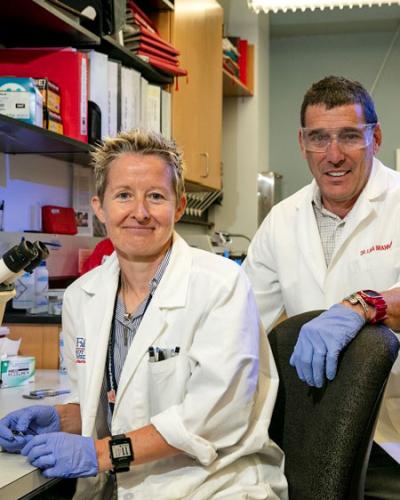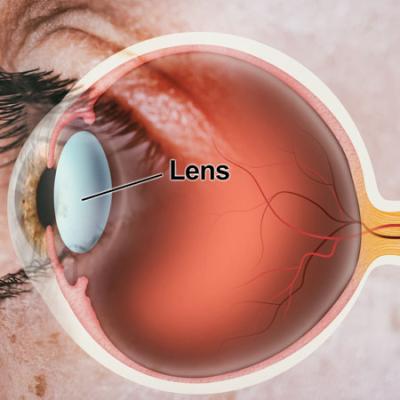Florida Atlantic University researchers Lisa A. Brennan and Marc Kantorow will determine the novel mechanisms that convert immature eye lens precursor cells into functional transparent cells.

Lisa A. Brennan and Marc Kantorow.
New replacement cells can be genetically engineered in the laboratory through programming of embryonic stem cells that can act as universal precursors for formation of mature cells and tissues. Although multiple strategies have been devised to program immature stem cells into functional adult cells, a major stumbling block has been identifying all the requirements for adult cell formation.
The Kantorow laboratory team, including Josh Disatham, a post-doctoral fellow funded by FAU’s Institute for Human Health and Disease Intervention (I-Health), discovered that low oxygen levels (hypoxia) are a key driver of the cellular reprogramming events leading to formation of mature transparent lens cells. This new grant seeks to identify the pathways controlling this hypoxia-induced cellular transformation event.
“This research led by the Kantorow laboratory is a game-changer for the future of regenerative medicine,” said Lewis S. Nelson, dean and chief of health affairs, FAU Schmidt College of Medicine. “By uncovering the precise requirements for transforming stem cells into fully functional adult cells, we are addressing one of the most critical challenges in treating degenerative diseases. This breakthrough has the potential to dramatically improve patient outcomes by offering new hope for restoring damaged tissues and organs, ultimately enhancing both the quality and longevity of life.”
Regenerative therapies for degenerative diseases rely on understanding how immature cells develop into their mature forms.
“Specifically, our work will examine the role played by the master regulator of the hypoxic response, hypoxia-inducible transcription factor 1 or HIF1a in control of lens gene expression and the requirement for oxygen-induced epigenetic modifications that regulate DNA conformation,” said Kantorow. “These novel studies, using lens cells as a model system, provide clues into the development of strategies for engineering of more complex cells and tissues and therefore novel therapies for the treatment of degenerative disease.”

Diagram of the eye showing the location of the lens. Credit Adobe Stock.
In the case of the eye’s lens, the process of how immature cells develop into their mature forms involves a single layer of epithelial cells on the surface transitioning into fiber cells in the core. For fiber cells to mature and make the lens clear, they must activate specific genes responsible for structural proteins such as crystallins, metabolic changes (switching to glycolysis), and the removal of internal organelles. If this process fails, it can lead to cataracts, a major cause of vision problems.